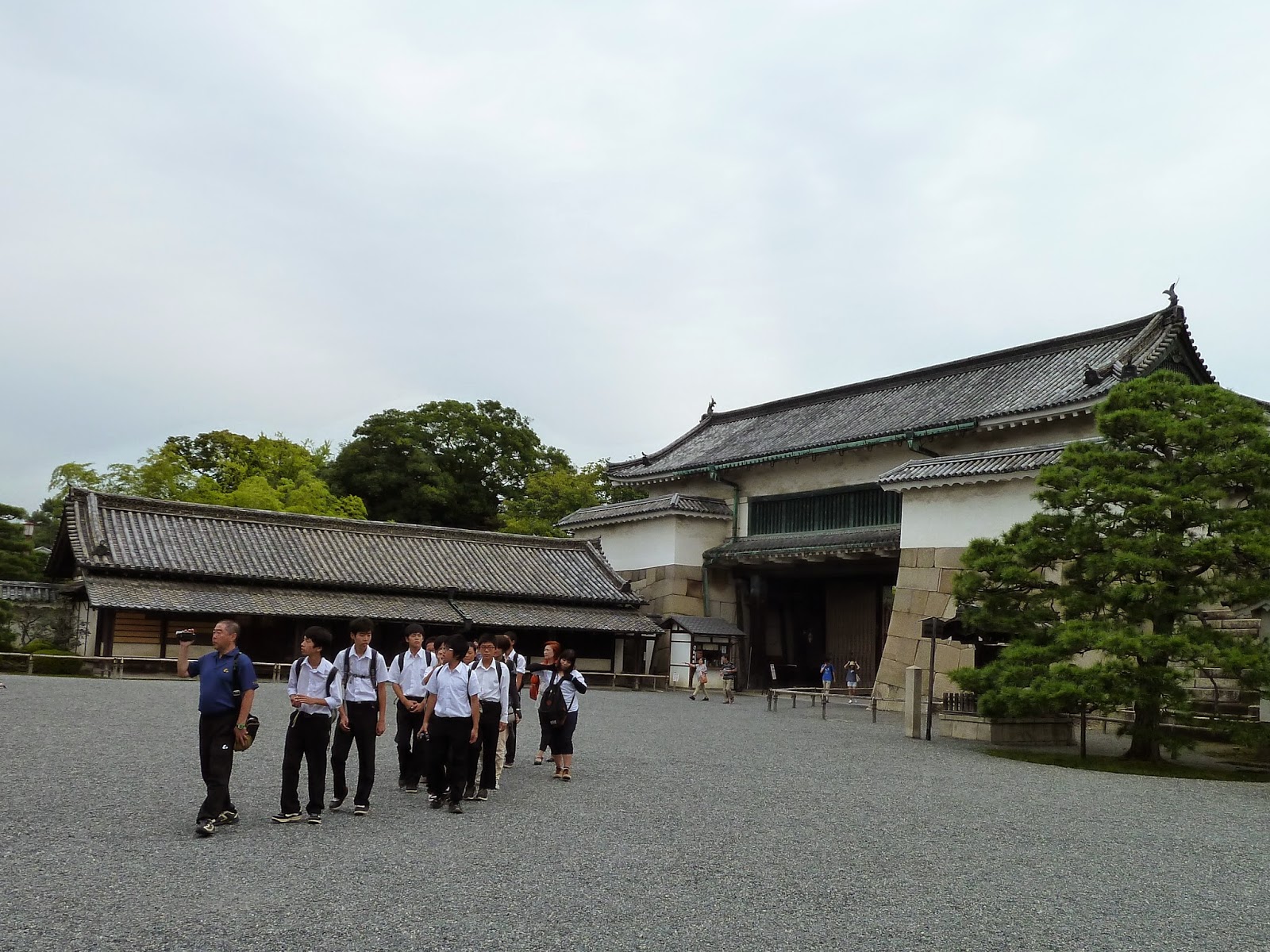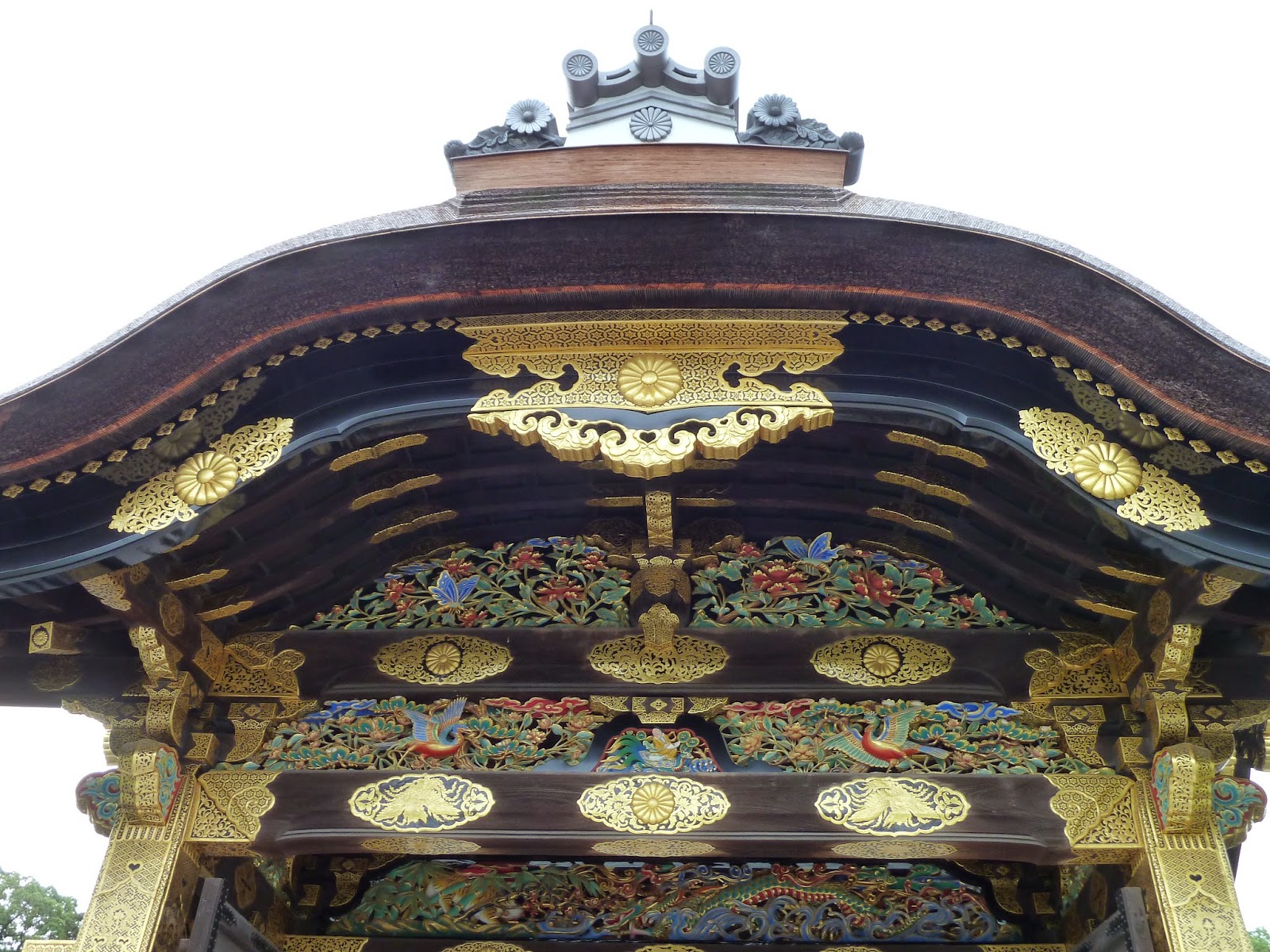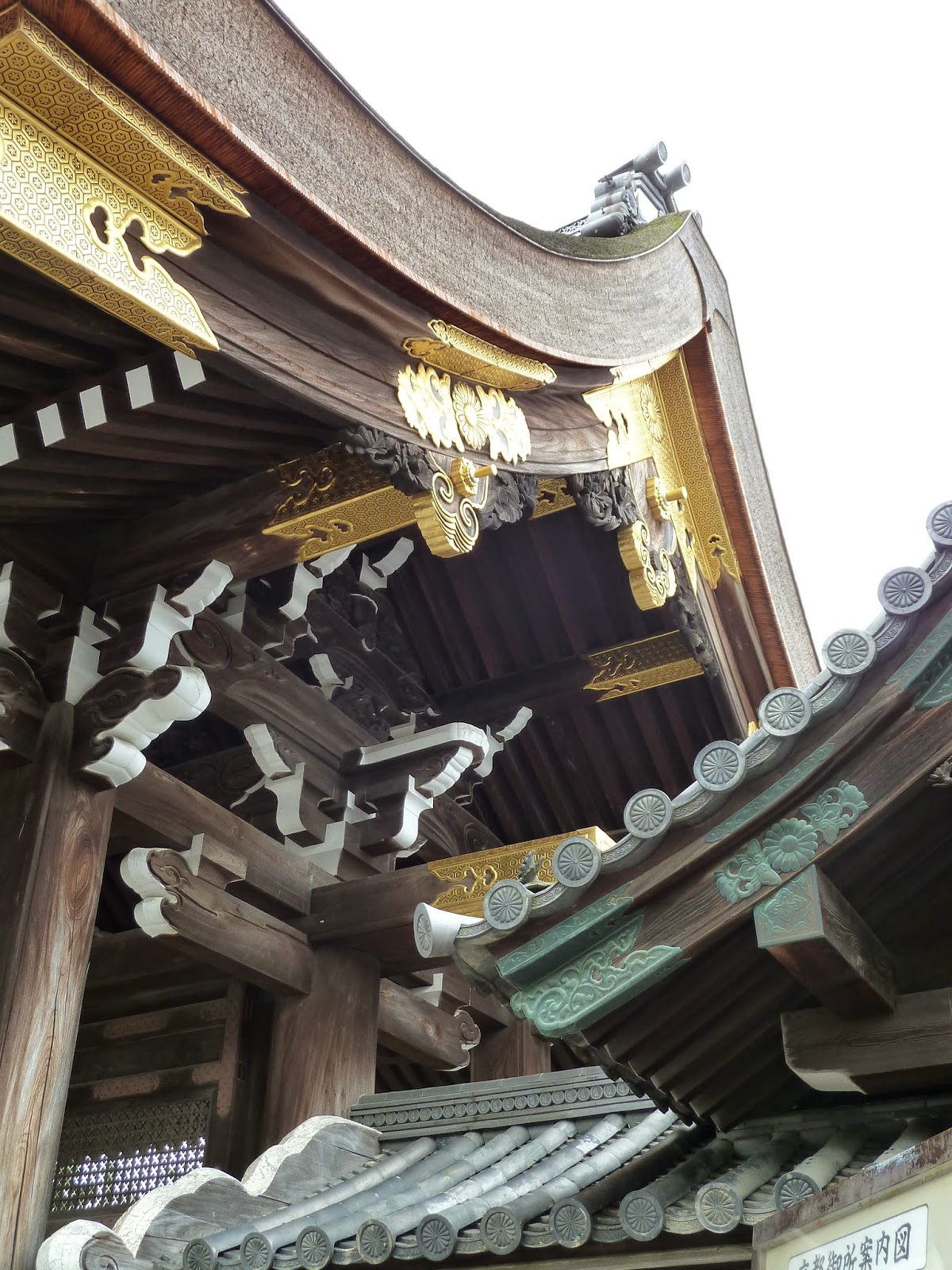The Kyoto tour would visit 3 sites in the morning, break for lunch, and then see 3 more places in the afternoon. Within Kyoto are around 1600 Buddhist temples and 400 Shinto Shrines. From what I gathered, Shinto Shrines are visited when a person is seeking a particular blessing or wish. A different Shrine is visited for each different kind of desire. We saw a high school sports team at one shrine seeking blessings of good fortune in their tournament that day. According to our guide, most Japanese are blessed as a baby in a Shinto Shrine, then they marry in a Christian Church, and at death they are taken to a Buddhist Temple. As you view the photos, keep in mind that photography is not permitted inside most temples.
Nijo Castle was the home of the Shogun, or political leader of the area, and was built in 1603. It was decorated inside and out with wood carved peacocks - a symbol of compassion and love, Another unique feature was the "nightingale" wood floors which were designed to squeak to warn of intruders.
Kinkaku (The Golden Pavilion) and Rokuon-ji Temple was the most beautiful of the sites seen on the tour. Gold foil on lacquer covers the upper two levels of Kinkaku, which is a hall containing relics of Buddha. Each of the three levels is built in a different 11th century aristocratic architectural style. A shining phoenix tops the pavilion. A stroll around the beautiful grounds revealed a small temple, a cute bamboo tea house, and the living quarters. Leaving the park we could see a character used in Japanese writing upon the mountain. August 15th of each year, bonfires are lit in certain shapes and symbols upon 5 mountains around Kyoto in an event called Gozan no Okuribi. The Okuribi were meant to guide the souls of the ancestors to the world beyond. The Okuribi are also believed to protect against evil.
After breaking for a lovely lunch, which consisted of a teriyaki flavored chicken soup, rice, tempura shrimp and vegetables, tofu salad, shrimp salad, potato salad and fruit for dessert, we climbed aboard our bus and drove to the Heian Shinto Shrine which was built in 1895. A huge Torri gate marks the entrance to the sacred place, where one must wash to purify themselves prior to entry. Shrine visitors write their wishes on these wooden plates called Ema and then leave them at the shrine in the hope that their wishes come true. Similarly, Omikuji are fortune telling paper slips which are randomly drawn. By tying the piece of paper around a tree's branch, good fortune will come true or bad fortune can be averted.
Entering Sanjusangendo Temple was one of those "wow" moments, when you can't believe what you are seeing. Standing within this 120 meter long Buddhist temple hall are 100 life-size statues of the Buddhist deity, "Kannon", god of mercy, The statues are made of Japanese cypress and were made during the 12th and 13th centuries. These multi-armed Bodhisattva's hold different objects in their many hands. The detail is amazing! Additionally one gigantic seated statue is placed in the center of the others, and 28 large statues of guardian deities stand in front of the Kannons. These guardian gods have their origin in India, and generally represent different aspects of nature, such as thunder, rain, wind, harvest, or music. (Since photos could not be taken inside, I have included a few from a non-copyrighted English guide book purchased on-site.)
Kiyomizudera was the final stop on our tour of Kyoto. The name means "Pure Water Temple" and was founded in 798 near a waterfall and pool. In years past, there was a tradition that if you survived a jump off the balcony into the pool below, your wish would be granted. Tradition now states that if you drink from the waterfall, your wish will come true. It's amazing to consider that the present structure was built in 1633 without using a single nail. A quaint souvenir shopping district was built up along the path to the temple. There were several beautiful structures including pagodas and bells surrounding Kiyomizudera, and we were able to enjoy some sweeping (but not clear) vistas of Kyoto city.



Have you seen enough temples? Surprisingly, I found each one to be uniquely fascinating and beautiful, and I looked forward to seeing a few more another day!






























































I continue to be amazed at the experiences that you are having. I absolutely love how green it is in Japan. Just beautiful!
ReplyDelete